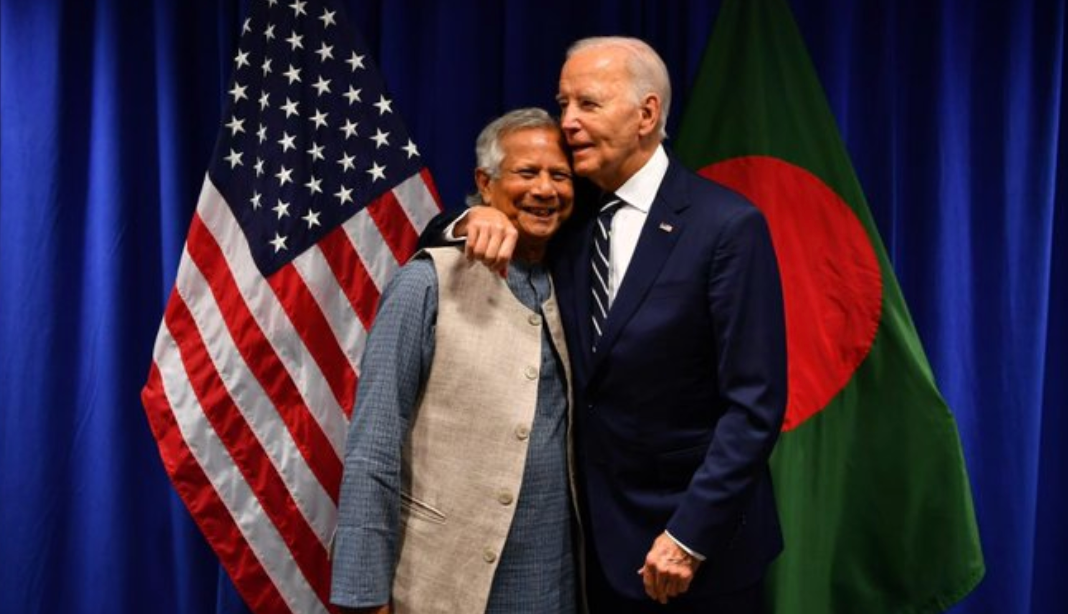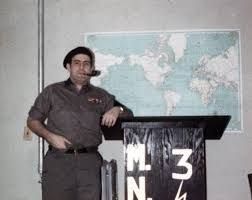It's no longer the "Napoleon Complex," It's Officially the "Trump Complex"
January 8, 2018
Trump's Narcissistic Behavior is Endangering the World
Most people are familiar with the pseudo-psychological belief, “Napoleon Complex,” “Napoleonic Complex,” or “Short-Man Syndrome.” The theory is that the French ruler Napoleon Bonaparte overcompensated for his height with a quest for worldwide domination. (Napoleon, who was 5’7”, wasn’t actually short for that period of time. He was average height.)
Armchair psychologists like to believe that this is the underlying cause of overly aggressive, narcissistic behavior from people who are small in size. Let’s leave it up to the trained professional to decide if there’s any validity to this theory. However, his tweets from last week firmly cemented the need to change the name to the “Trump Complex.”
North Korean Leader Kim Jong Un just stated that the “Nuclear Button is on his desk at all times.” Will someone from his depleted and food starved regime please inform him that I too have a Nuclear Button, but it is a much bigger & more powerful one than his, and my Button works!— Donald J. Trump (@realDonaldTrump) January 3, 2018
....Actually, throughout my life, my two greatest assets have been mental stability and being, like, really smart. Crooked Hillary Clinton also played these cards very hard and, as everyone knows, went down in flames. I went from VERY successful businessman, to top T.V. Star.....— Donald J. Trump (@realDonaldTrump) January 6, 2018
....to President of the United States (on my first try). I think that would qualify as not smart, but genius....and a very stable genius at that!— Donald J. Trump (@realDonaldTrump) January 6, 2018
It’s difficult to find a public figure throughout history who has openly expressed such glaring insecurity. Long before becoming President, he took every opportunity possible to brag about his wealth. His name is synonymous with the expression, “Born on third base, thought he hit a triple.” He even reportedly worked as his PR person, “John Miller,” to tout his business acumen, in addition to spreading rumors that Madonna and Kim Basinger hoped to date him. Yet, for someone who presented himself as the ultimate success in every aspect of life, Trump has displayed an unbelievable level of sensitivity when criticized.
He has a long history of using his financial leverage to attack his detractors in a variety of ways. For example, he successfully pressured a small brokerage to fire one its analysts, Marvin Roffman, after predicting that Trump’s Taj Mahal casino would fail.
Ultimately, Roffman’s assessment proved to be accurate. Trump already owned two Atlantic City casinos and the decision to add a third casino, by way of heavy debt, cannibalized his profits. All three casinos went bankrupt, thus sending Trump’s PR people into overdrive.
Ironically, Trump has aggressively targeted people outside of his authority, such as Roffman, to get them fired. However, he has never been willing to take such action within his own company. Obviously, that assertion contrasts the image crafted on The Apprentice with his famous line, “You’re Fired.” That show allowed him to look like an assertive decision maker. However, Barbara Res, a former executive with the Trump organization, has said that she never saw him actually fire anyone. He always ordered someone else to handle this uncomfortable task.
Someone who is supposed to be living such a charmed life shouldn’t be provoked by harsh comments on Twitter. However, Trump has a list of online feuds that is too lengthy for this post. In fact, some within his inner circle truly believe that he decided to run for President this last time because he was mocked at the 2011 White House Correspondents’ Dinner.
That campaign brought his “Trump Complex” to the forefront. After the “Little Marco” comments, Rubio criticized the size of Trump’s hands. Trump decided to use the debates to claim, “I guarantee there’s no problem.” Afterward, he claimed those hands are able to drive a golf ball 285 yards. Yet, Trump apparently needed two hands to grip a glass of water during a speech.
During campaign media stops, Trump felt the need to proclaim a high level of intelligence. There were many gems, such as “I have a very big brain.” He also tried to brand himself as a tough guy in many ways, including praise for Putin’s “strong leadership” and promoting violence against protestors at his rallies. This man, who avoided serving in the Vietnam War via five deferments, asserted that “he knows more about ISIS than the generals’ do.” He also felt the need to belittle McCain’s service by stating, “I like people who weren’t caught.”
Even though he drew large crowds with adoring fans for campaign rallies, he consistently felt the need to exaggerate the size of the crowds. This trend continued into the White House. Ex-Press Secretary, Sean Spicer, was clearly pressured to do the same. He said, “That was the largest audience to witness an inauguration, period,” despite the demonstrable proof that it was far from accurate.
By the same token, Trump’s first televised cabinet meeting started with “introductions” from each member. Instead of his cabinet members telling a little bit about their background, they were clearly obligated to praise the President and what followed was nothing other than groveling. Hence, when reports later surfaced that Rex Tillerson called him a “moron,” he felt the need to compare IQ test scores.
Trump also couldn’t accept the fact that he lost the popular vote by 2.8 million votes. Consequently, he claimed that 3-5 million people voted illegally. Hence, taxpayer funds were used to assuage his ego to form a voter fraud commission, which was shut down last week with no evidence to back up his ridiculous claim.
Nonetheless, he claimed it was a “massive landslide victory” with the Electoral College votes. Check out Trump’s response when fact-checked by a reporter about his claim that it was “the biggest Electoral College win since Ronald Reagan.”
Trump clearly didn’t have a decisive victory. But, can he stand behind a great Presidential record? He claimed that his administration passed more bills than any President. However, GovTrack found his administration passed the fewest number of bills going back to the Eisenhower administration.
Likewise, it appears Trump tried to repair his ego when he wasn’t chosen by Time Magazine to be “Man of the Year.” He tweeted that he “probably” was going to be chosen, but he “took a pass.” After all, this particular magazine seems to be an obsession. Some of his properties have been decorated with fake issues of Time Magazine in which Trump appears on the front cover with the caption, “The ‘Apprentice’ is a television smash!”
On a final note, there are too many of these types of examples to list. However, the comments from his Inside Edition tape may best encapsulate the deep psychological issues of Donald Trump. Who would describe bragging about sexual assault as “locker room talk”?
At this point, the terms “Napoleon Complex” or “Napoleonic Complex” for deeply insecure actions need to be discontinued. This now needs to be known as the Trump Complex. Let's use the #TrumpComplex every time in the future when he displays this kind of conduct.









